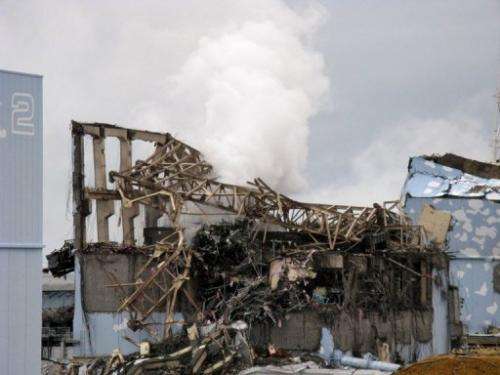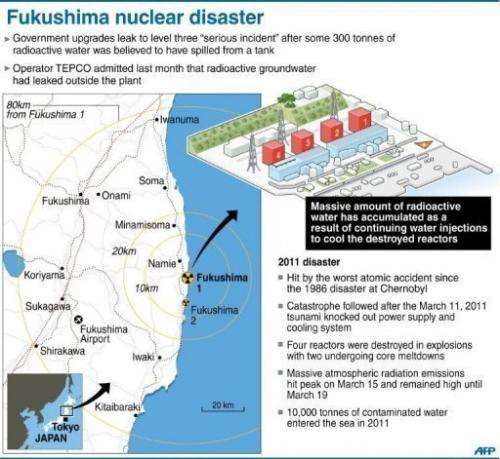Fukushima water handling 'like whack-a-mole': minister

TEPCO's handling of radioactive water at Fukushima has been like "whack-a-mole", a minister said Monday after visiting the battered plant, pledging Japan's government would step up its involvement at the site.
The colourful comments come after 300 tonnes of toxic liquid was found to have leaked from one of the hundreds of tanks storing heavily polluted water used to cool broken reactors at the plant.
"With regard to TEPCO's handling of contaminated water, it has been just like whack-a-mole," said industry minister Toshimitsu Motegi, in reference to the anarchic fairground game in which players bash creatures that pop up from random holes.
"From now on, the government will play a greater role," he said.
The trip by Motegi, who was apparently referring to TEPCO's hurried response to events rather than planning ahead, comes amid growing calls for the government to take charge of the clean-up at the plant.
Critics accuse TEPCO (Tokyo Electric Power Co) of being incapable of dealing with the vast—and growing—volumes of radioactive water at the site.
Last week's leak was dubbed the most serious single incident since the plant went into meltdown in March 2011 after being hit by a quake and tsunami.
Prime Minister Shinzo Abe in early August described as "urgent" the battle to stop contaminated water escaping into the ocean.

Chief Cabinet Secretary Yoshihide Suga said in Tokyo that Abe had ordered his industry minister to take "every possible measure", including the use of reserve funds from the national budget.
"The leak of contaminated water from the tank was extremely regrettable," Suga told a news conference. "Failing to manage tanks properly is a big problem."
"As a government, we will do whatever we can do to resolve the problem."
Inspectors from Japan's nuclear watchdog who toured the plant Friday declared water storage at the site was "sloppy".
TEPCO said Saturday the tank that sprang a leak was one of three to have been relocated from its original spot because of subsidence.
The utility has not yet pinpointed the reason for the problem with the first tank, but at the weekend began emptying the other tanks that were moved with it in 2011.
On Sunday Japanese Foreign Minister Fumio Kishida visited Chernobyl in Ukraine, the site of a 1986 nuclear disaster, and was due to hold talks with his Ukrainian counterpart on Monday.
Kishida hopes to share experience in overcoming the consequences of nuclear disasters, a spokesperson said.
More than two years after the disaster at Fukushima, TEPCO continues to struggle with the clean-up, a project expected to take around four decades.
A catalogue of mishaps, often accompanied by a perceived unwillingness publicly to reveal the extent of problems, is leading to a growing chorus warning of the need for outside experts to step in and take control of the operation.
While no one is officially recorded as having died as a direct result of the radiation released by the meltdowns, large areas around the plant had to be evacuated.
Tens of thousands of people are still unable to return to their homes, with scientists warning some areas may have to be abandoned for human habitation.
© 2013 AFP





















